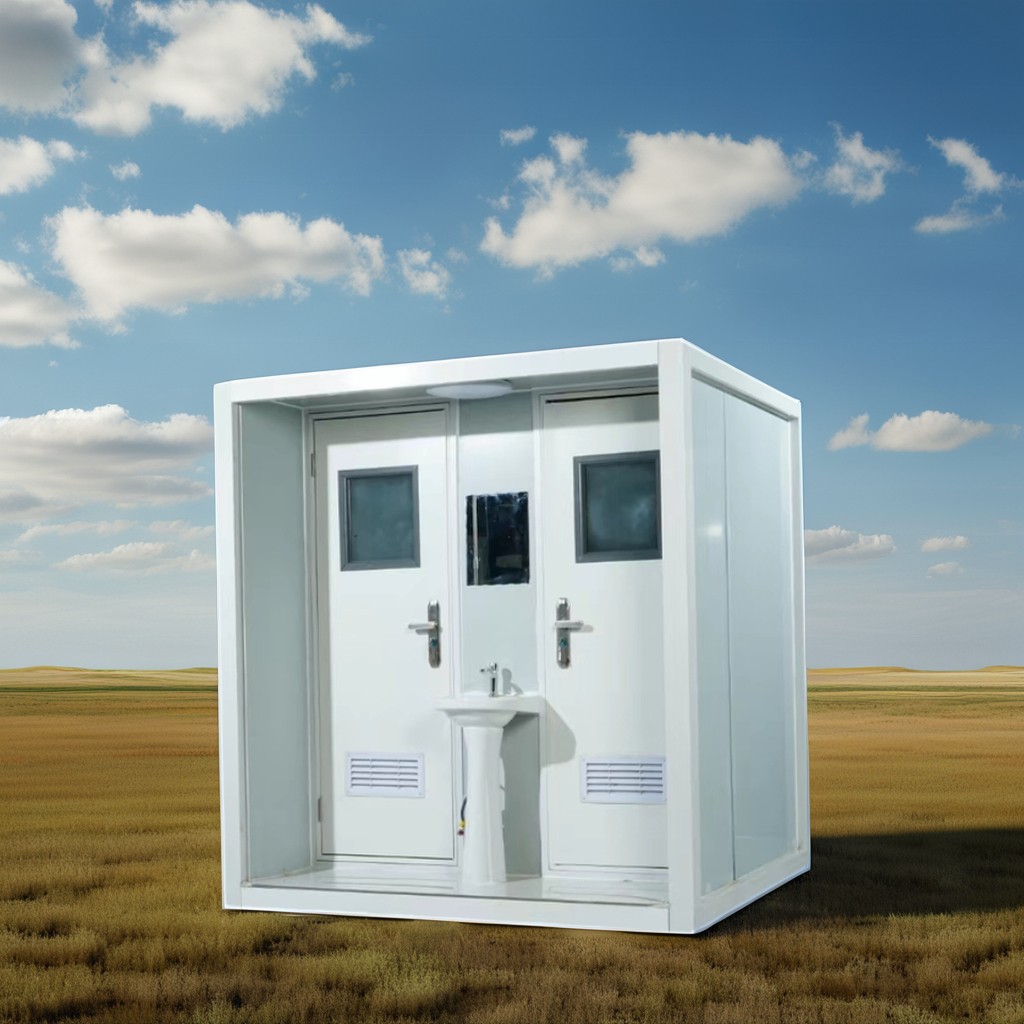How to Choose the Best Outdoor Mobile Toilet?
2025-09-01
Outdoor mobile toilets are essential for outdoor events, construction sites, camping trips, festivals, and disaster relief operations. With increasing demand for portable sanitation solutions, choosing the right outdoor mobile toilet has become more critical than ever. In this comprehensive guide, we will explain what outdoor mobile toilets are, how they work, the key specifications to consider, and why investing in high-quality portable sanitation facilities ensures hygiene, safety, and convenience.
What Is an Outdoor Mobile Toilet and How Does It Work?
An outdoor mobile toilet is a self-contained portable sanitation unit designed to provide hygienic restroom facilities in locations where permanent toilets are unavailable or impractical. These units are widely used in outdoor events, remote worksites, disaster relief areas, and temporary housing zones.
How Outdoor Mobile Toilets Function
Outdoor mobile toilets typically consist of the following components:
-
Toilet Bowl & Seat – Designed for comfortable use, with ergonomic shapes and durable materials.
-
Holding Tank – Stores waste temporarily and is engineered to be leak-proof and odor-resistant.
-
Ventilation System – Reduces unpleasant odors by allowing airflow.
-
Flushing Mechanism – Either manual, foot-pump, or fully automatic, depending on the model.
-
Handwashing Facilities – Some models include integrated sinks, soap dispensers, and hand sanitizers.
-
Waste Disposal Process – Waste is collected in a sealed tank, which is later emptied and sanitized by professional service providers.
Key Product Features and Specifications
When selecting an outdoor mobile toilet, you must consider several specifications to ensure performance, hygiene, and user comfort. Below is a detailed overview of the essential product parameters:
| Feature | Specification | Benefits |
|---|---|---|
| Material | High-Density Polyethylene (HDPE) | Strong, lightweight, UV-resistant, easy to clean |
| Dimensions | 1100mm × 1200mm × 2300mm (varies by model) | Compact yet spacious interior |
| Weight | 85 – 120 kg | Easy transportation and installation |
| Tank Capacity | 150L – 250L | Supports multiple users before emptying |
| Flushing System | Manual pump / Foot pump / Automatic | Hygienic and user-friendly operation |
| Ventilation | Air vents and odor control systems | Ensures a fresh environment inside |
| Floor Design | Anti-slip textured flooring | Safety even in wet conditions |
| Accessories | Hand sanitizer, tissue holder, coat hook, mirror | Enhanced comfort and usability |
| Cleaning Cycle | Every 50 – 100 uses | Maintains hygiene and safety |
| Customization | Available in multiple colors and branding options | Ideal for events and corporate identity |
These specifications make outdoor mobile toilets suitable for multiple scenarios, including:
-
Construction sites – Durable design withstands heavy daily usage.
-
Outdoor events & festivals – High-capacity tanks reduce service frequency.
-
Camping and hiking – Compact size and lightweight materials make them portable.
-
Disaster relief – Rapid deployment and sanitation support in emergencies.
How to Choose the Right Outdoor Mobile Toilet for Your Needs
Selecting the right outdoor mobile toilet involves evaluating several key factors:
A. Usage Frequency and Capacity
Determine the expected number of users per day. For example:
-
Small events (50–100 people): Basic single-unit toilets with a 150L tank.
-
Medium events (100–300 people): Units with integrated sinks and 200L tanks.
-
Large gatherings (300+ people): Multiple units with advanced flushing systems and larger tanks.
B. Hygiene and Comfort Features
User experience matters, especially in high-traffic areas. Look for:
-
Foot-operated flushing to reduce contact.
-
Built-in hand sanitizers and sinks.
-
Proper ventilation to minimize odor.
C. Ease of Transportation and Setup
Choose units that are lightweight and designed for quick installation. Foldable or modular designs are ideal for frequent relocations.
D. Durability and Weather Resistance
For outdoor usage, the toilet should be made from UV-protected HDPE to withstand sunlight, rain, wind, and extreme temperatures.
E. Waste Management and Environmental Impact
Modern outdoor mobile toilets often come with eco-friendly features:
-
Biodegradable deodorizing chemicals.
-
Efficient waste separation systems.
-
Water-saving flush mechanisms.
By considering these factors, you can ensure that your investment meets both functional and environmental standards.
Outdoor Mobile Toilet FAQs
Q1. How often should outdoor mobile toilets be cleaned and serviced?
Answer: The cleaning frequency depends on the number of users and the tank capacity. On average, a 150L holding tank can support approximately 50 to 60 uses before requiring emptying and sanitization. For events with high traffic, daily cleaning is recommended. Professional service providers handle waste disposal, refill deodorizing chemicals, and sanitize the interior to maintain hygiene.
Q2. Are outdoor mobile toilets safe to use in extreme weather conditions?
Answer: Yes, high-quality outdoor mobile toilets are designed to withstand extreme weather. Units made from UV-protected HDPE resist heat and sunlight, while their reinforced structure ensures stability in strong winds. Additionally, anti-slip flooring provides safety during rainy conditions, making them suitable for year-round outdoor usage.
Why Cymdin Outdoor Mobile Toilets Are Your Best Choice
When it comes to providing premium-quality outdoor mobile toilets, Cymdin stands out as a trusted brand. Our products are designed with advanced engineering, user comfort, and environmental sustainability in mind. Whether you need a single unit for a small camping trip or hundreds of portable toilets for a large event, Cymdin offers customizable solutions tailored to your needs.
From durable HDPE construction to high-capacity holding tanks and hygienic flushing systems, our outdoor mobile toilets ensure maximum reliability and user satisfaction.
For bulk orders, customized branding, or product inquiries, contact us today to get expert recommendations and pricing details.



